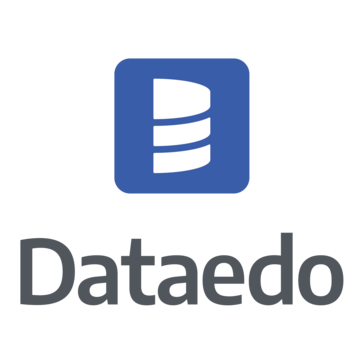4.25
N-able Risk Intelligence Review
Explore our N-able Risk Intelligence review. Analyze security features, pricing, updates, support, and overall value for money. See if it meets your needs!
Comprehensive overview and target audience
Comprehensive overview of N-able Risk Intelligence and target audience
N-able Risk Intelligence serves as a critical tool for Managed Service Providers and internal IT departments aiming to quantify data risk in monetary terms. Its primary function is to discover sensitive data across networks, assess its vulnerability, and calculate the potential financial impact of a breach. This proactive approach helps organizations prioritize security efforts effectively, moving beyond simple threat detection to actual risk management based on potential business cost. Understanding the specific vulnerabilities tied to discoverable data allows for more targeted security investments.
The target audience predominantly includes MSPs managing multiple client environments and medium to large enterprises with dedicated IT security teams. These organizations need sophisticated tools to identify Personally Identifiable Information PII, Protected Health Information PHI, and payment card data PCI DSS compliance related information. They require actionable intelligence, not just raw data logs. N-able Risk Intelligence provides precisely this, translating technical vulnerabilities into clear financial risk assessments that resonate with business stakeholders.
Evaluating the N-able Risk Intelligence value for money involves considering its ability to prevent costly breaches. By identifying unsecured sensitive data and estimating potential fines or reputational damage costs, it helps justify security spending. When performing an N-able Risk Intelligence pricing comparison against potential breach costs or alternative solutions, its comprehensive scanning and reporting capabilities often present a compelling financial argument. Its integration within the broader N-able ecosystem also adds value for existing N-able partners.
Key N-able Risk Intelligence security features include:
- Deep data discovery scanning file contents for sensitive information patterns.
- Vulnerability scanning identifying weaknesses associated with located data.
- Risk assessment calculating potential financial liability in dollars euros or pounds.
- Permission discovery highlighting excessive access rights to sensitive files.
Consistent N-able Risk Intelligence updates and new features ensure the platform evolves alongside emerging threats and data types. This commitment means users benefit from continuously improving scanning accuracy and broader compliance coverage. Finally, robust N-able Risk Intelligence support and training resources are available, including documentation, webinars, and technical assistance, enabling teams to maximize the tool’s potential and effectively communicate risk findings throughout their organization. These resources are vital for onboarding new staff and staying current with platform enhancements.
User experience and functional capabilities
Navigating N-able Risk Intelligence generally presents a structured experience, particularly for IT professionals familiar with security dashboards and reporting tools. Initial N-able Risk Intelligence user experience insights suggest that while the interface is comprehensive, packed with data points and configuration options, it requires a period of familiarization. The layout prioritizes displaying risk metrics clearly, often translating complex data findings into understandable financial figures. Understanding how to use N-able Risk Intelligence effectively begins with configuring scans tailored to specific network segments or data types like PII or PHI. This involves defining scan schedules, targets, and the types of sensitive data patterns to search for. Once configured, the tool automates the discovery and assessment process, significantly reducing manual effort.
The core functional capabilities revolve around deep data discovery and risk quantification. The platform meticulously scans endpoints and servers, analyzing file contents, metadata, and permissions to identify sensitive information. It then cross references this data with vulnerability information and access levels to calculate a potential breach cost in clear monetary terms. This dollar value risk assessment is a key differentiator, providing tangible metrics for security discussions and budget justifications. Reporting capabilities are robust, offering detailed breakdowns of discovered data, associated risks, and specific file locations, crucial for targeted remediation efforts. These reports form the backbone of demonstrating compliance posture and prioritizing security tasks based on financial exposure.
Implementation typically involves deploying lightweight agents to target endpoints or configuring network based scans. While a detailed N-able Risk Intelligence implementation guide is available through N able’s support resources, the process generally requires careful planning regarding scope and credentials. Common problems with N-able Risk Intelligence can sometimes include initial configuration hurdles, ensuring appropriate permissions for deep scanning without disrupting operations, and managing the volume of data generated from large scale scans. Fine tuning scan settings and understanding report nuances are key to overcoming these potential challenges. Some users also report initial difficulties interpreting the vast amount of data provided, necessitating a focus on the summary risk figures first.
A significant advantage lies in integrating N-able Risk Intelligence with other tools within the IT management ecosystem. Integration with N able’s RMM Nsight Remote Monitoring and Management and PSA Professional Services Automation platforms streamlines workflows for MSPs, allowing risk data to inform ticketing, remediation tasks, and client reporting directly. This interconnectedness enhances operational efficiency. Furthermore, the platform benefits from regular N-able Risk Intelligence updates and new features, ensuring it adapts to evolving threats, new data privacy regulations, and customer feedback. These updates often include refined scanning engines, expanded data type recognition, and improved reporting formats. Adopting best practices for N-able Risk Intelligence involves establishing a regular scanning cadence, promptly investigating high risk findings, addressing excessive permissions, and using the financial risk data to drive security awareness and investment decisions across the organization. Consistent application and review are vital for maximizing its value.
Who should be using N-able Risk Intelligence
N able Risk Intelligence is specifically designed for organizations that recognize the critical need to understand their data security posture in concrete financial terms. Its primary users fall into two main categories: Managed Service Providers MSPs and the internal IT or security departments of medium to large enterprises. MSPs find immense value in leveraging this tool across their client base. It allows them to move beyond basic security monitoring and provide quantifiable risk assessments, demonstrating tangible value and justifying security service costs to clients by showing potential financial exposure.
Internal IT and security teams within enterprises, particularly those operating in regulated industries like finance, healthcare, or retail, benefit significantly. These organizations often handle vast amounts of sensitive data including Personally Identifiable Information PII, Protected Health Information PHI, and Payment Card Industry Data Security Standard PCI DSS information. N able Risk Intelligence helps them locate precisely where this sensitive data resides, identify associated vulnerabilities and permissions issues, and crucially, calculate the potential cost of a breach. This financial metric is invaluable for communicating risk to executive leadership and securing budget for necessary remediation efforts.
Consider a typical N able Risk Intelligence use case scenario: An MSP uses the tool to scan a new client’s network. It discovers unsecured PII scattered across multiple endpoints and calculates a potential breach liability in the hundreds of thousands of dollars. This report becomes a powerful driver for the client to invest in better data security controls proposed by the MSP. Similarly, an enterprise CISO can use these reports to prioritize patching efforts, focusing first on systems guarding data with the highest associated financial risk. Organizations committed to implementing Best practices for N able Risk Intelligence, such as regular scanning schedules and prompt remediation based on risk findings, will maximize its effectiveness in proactively reducing their financial liability from data breaches.
Unique Features offered by N-able Risk Intelligence
N-able Risk Intelligence offers significant flexibility, allowing organizations to tailor its powerful scanning and assessment capabilities to their specific needs and operational contexts. This adaptability is key to maximizing its value proposition. Users can precisely configure scans: defining target systems, specific network segments, or entire domains; scheduling scans during off peak hours to minimize disruption; and specifying the exact types of sensitive data patterns to search for, covering critical information like PII, PHI, and PCI DSS data. Reporting is also highly customizable, enabling teams to generate focused views that highlight the most critical risks for different stakeholders. Technical teams receive detailed file paths for remediation, while executives get clear financial impact summaries. Such precision is vital when Customizing N-able Risk Intelligence for business growth, as these tailored reports effectively communicate value and justify necessary security investments or service upgrades.
- The platform’s most unique and compelling feature remains its ability to quantify data breach risk in concrete financial terms: dollars, euros, or pounds. This transforms abstract technical vulnerabilities into tangible business impact assessments.
- Deep data discovery capabilities delve into file contents and metadata, ensuring accurate location of sensitive information often missed by surface level scans.
- Permissions discovery meticulously identifies users or groups possessing excessive access rights to critical data stores, highlighting significant internal risk factors.
- Integrated vulnerability assessment correlates discovered sensitive data with known system weaknesses, providing essential context for the calculated financial risk level.
While its comprehensive feature set is ideal for MSPs and medium to large enterprises, the granular configuration means its power can be focused. MSPs effectively deploy N-able Risk Intelligence for small businesses under their management, providing enterprise grade risk insights scaled appropriately. A core strategic advantage involves Integrating N-able Risk Intelligence with other tools. Its seamless connection with the N able Nsight RMM and N able PSA platforms creates exceptionally efficient workflows, particularly for Managed Service Providers. This allows discovered risks to automatically inform service tickets, guide remediation tasks, and populate client reports, embedding risk management directly into daily operations and making security truly proactive.
Pain points that N-able Risk Intelligence will help you solve
Many organizations grapple with significant data security challenges daily. A primary concern is the pervasive uncertainty about where sensitive data actually resides across complex IT environments. Without knowing the location of PII, PHI, or payment card information, effective protection is nearly impossible. This lack of visibility creates constant anxiety about potential breaches and non compliance.
Another major pain point is the inability to translate technical vulnerabilities into tangible business impact. Security teams often struggle to answer the crucial question: “What is the real financial risk if this data is compromised?”. This makes it difficult to:
- Justify necessary security investments to leadership.
- Prioritize remediation efforts effectively; are you fixing the highest dollar risk first?
- Demonstrate the value of security measures beyond simply blocking threats.
N able Risk Intelligence directly tackles these issues. It systematically scans your network to discover unsecured sensitive data, eliminating the guesswork. Crucially, it quantifies the potential financial liability associated with this data in clear monetary terms. This provides the concrete evidence needed to drive data driven security decisions and gain budget approval. It helps you focus resources on mitigating the most significant financial exposures first, rather than treating all vulnerabilities equally.
Furthermore, demonstrating compliance with regulations like GDPR, HIPAA, or PCI DSS can be arduous. N able Risk Intelligence generates detailed reports pinpointing sensitive data locations and associated risks, serving as vital documentation for compliance audits. It also identifies excessive permissions, helping you address internal risks proactively. For Managed Service Providers, understanding and managing risk across diverse client environments is simplified; the platform supports N able Risk Intelligence for different businesses sizes, providing scalable insights. The process of Customizing N able Risk Intelligence for business growth allows MSPs to offer higher value security services, using risk quantification as a key differentiator. Finally, by Integrating N able Risk Intelligence with other tools like RMM and PSA platforms, you streamline workflows, automate ticketing for remediation, and embed risk management directly into your operational processes, eliminating inefficiencies and enhancing responsiveness.
Scalability for business growth
N able Risk Intelligence is built with scalability at its core, making it an ideal solution for organizations anticipating or undergoing growth. Whether you are a Managed Service Provider expanding your client portfolio or an enterprise IT department managing an increasing number of endpoints and data volumes, the platform adapts seamlessly. Its architecture is designed to handle large scale deployments without sacrificing performance. This means you can confidently extend risk scanning and assessment across new departments, newly acquired companies, or a rapidly growing customer base without hitting operational bottlenecks.
For MSPs, this scalability is crucial. As you onboard more clients, N able Risk Intelligence allows you to apply consistent, high value risk quantification services across the board. The ability to manage multiple tenants efficiently from a central point simplifies operations significantly. Customizing N able Risk Intelligence for business growth enables MSPs to tailor scanning profiles and reporting templates specifically for different client sizes and industries, ensuring relevant insights regardless of scale. This adaptability reinforces the value proposition, transforming security discussions from cost centers into strategic growth enablers by demonstrating proactive financial risk management.
Similarly, internal IT teams benefit immensely. As your organization’s digital footprint expands, so does the potential attack surface and the volume of sensitive data. N able Risk Intelligence scales alongside this growth, ensuring continuous visibility into your financial risk exposure. The detailed reporting remains effective even with vast amounts of data, allowing security teams to prioritize remediation based on calculated monetary impact, a critical capability when resources are stretched thin during expansion phases. Customizing N able Risk Intelligence for business scalability involves adjusting scan depths, frequencies, and reporting granularity to match the evolving complexity of the IT environment. This ensures that risk assessments remain accurate and actionable, supporting sustainable and secure business development.
Final Verdict about N-able Risk Intelligence
N able Risk Intelligence stands out in the crowded security landscape by directly addressing a critical business need: translating abstract data vulnerabilities into concrete financial risk. Its ability to discover sensitive data across complex networks and assign a potential dollar, euro, or pound value to its exposure is its most compelling attribute. This shifts security discussions from technical jargon to quantifiable business impact, enabling more informed decision making and effective resource allocation.
For Managed Service Providers and internal IT teams, particularly within regulated industries, the platform offers substantial benefits. Key strengths include:
* Pinpointing the exact location of sensitive PII, PHI, and PCI data.
* Calculating potential financial liability from data breaches.
* Identifying excessive permissions, a common internal threat vector.
* Providing detailed reports crucial for compliance documentation and audits.
* Facilitating prioritization of remediation efforts based on financial exposure.
* Scaling effectively to accommodate business growth and expanding client bases.
While the platform is powerful, potential users should anticipate an initial learning curve. Effectively configuring scans and interpreting the wealth of generated data requires familiarization and careful planning, especially in large or complex environments. However, the payoff for overcoming these initial hurdles is significant operational insight and risk reduction capability. Integration with other N able tools like Nsight RMM and PSA further enhances its value proposition, particularly for MSPs seeking streamlined workflows.
Our Final verdict on N-able Risk Intelligence is overwhelmingly positive for its intended audience. It successfully bridges the gap between technical security findings and business risk management. If your organization struggles to quantify data risk, justify security spending, or prioritize remediation based on potential financial impact, N able Risk Intelligence provides a focused, effective, and scalable solution. It empowers businesses to proactively manage their most significant data related financial exposures.
Advantage
Disadvantage
Automatically locate sensitive PII, PHI, PCI data
Clearly quantify potential data breach financial impact
Identify data access vulnerabilities proactively
See exactly who can access sensitive files
Streamline compliance reporting for key regulations
Disadvantage
Potential steep learning curve for full mastery
Reporting customization could offer more flexibility
Occasional false positives need manual verification
Scans can be endpoint resource-intensive
Integration with some niche tools may be limited
Rating
Product Support
Web Based
Windows
Mac OS
Linux
Android
iOS
Phone Support
Email/Help Desk
AI Chat Bot
Live Support
24/7 Support
Forum & Community
Knowledge Base
Live Online
Documentation
Videos
In Person
Webinars
Company: N-able
Email: Not Available
Address:
300 Tradecenter, Suite 5450, Woburn, MA 01801, United StatesPhone: #ERROR!
Implementation
Web Based
Windows
Mac OS
Linux
Android
iOS
Support
Phone Support
Email/Help Desk
AI Chat Bot
Live Support
24/7 Support
Forum & Community
Knowledge Base
Training
Live Online
Documentation
Videos
In Person
Webinars
Group text
Company: N-able
Email: Not Available
Address:
300 Tradecenter, Suite 5450, Woburn, MA 01801, United States
Phone: #ERROR!
Alternative Products
Frequently Asked Questions
What specific risks does N-able Risk Intelligence uncover?
N-able Risk Intelligence pinpoints vulnerabilities tied to unsecured sensitive data on endpoints and servers, identifies risky access permissions, and highlights potential data breach locations before exploitation.
How can N-able Risk Intelligence help me?
It empowers you to proactively discover, quantify, and prioritize data security risks across managed systems, enabling focused remediation, demonstrating security value to stakeholders or clients, and enhancing your overall defensive posture.
Who typically uses N-able Risk Intelligence?
Typically, Managed Service Providers (MSPs) leveraging it for client security assessments and internal IT departments focused on corporate data protection and compliance utilize N-able Risk Intelligence.
What types of sensitive data does it discover (e.g., PII, PHI, PCI)?
The tool discovers a broad spectrum of sensitive data including Personally Identifiable Information (PII) like social security numbers or driver’s licenses, Protected Health Information (PHI) crucial for healthcare compliance, Payment Card Industry (PCI) data such as credit card numbers, and other valuable company secrets or financial records.
How does Risk Intelligence calculate the potential financial impact of data exposure?
Risk Intelligence calculates potential financial impact by cataloging the types and volume of exposed sensitive data, assigning industry-accepted monetary values per record type, and factoring in potential fines and remediation costs associated with a breach of that specific data.
Does N-able Risk Intelligence assist with meeting compliance mandates?
Absolutely, it aids significantly in meeting compliance mandates such as GDPR, HIPAA, CCPA, and PCI-DSS by locating regulated data stores, assessing their risk level, and generating reports essential for audits and demonstrating necessary security controls.
How are the risk findings presented?
Findings are presented through intuitive dashboards providing high-level summaries, detailed granular reports listing specific risks and data locations, risk scores prioritizing vulnerabilities, and clear visualizations of the calculated potential financial liability of exposed data.
Is N-able Risk Intelligence worth it?
For organizations prioritizing proactive data security, especially MSPs needing to demonstrate value and internal IT managing compliance, N-able Risk Intelligence is often considered highly worthwhile; the investment in prevention frequently outweighs the potentially catastrophic financial and reputational costs of an actual data breach.








